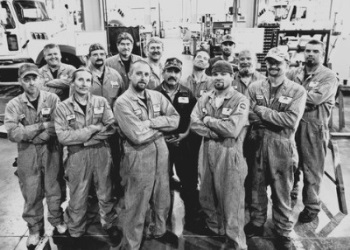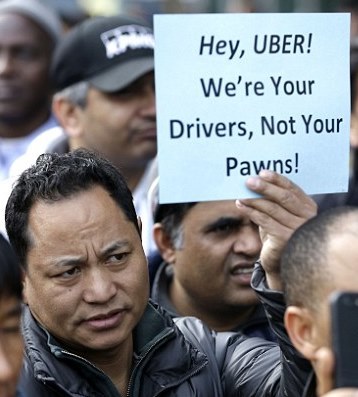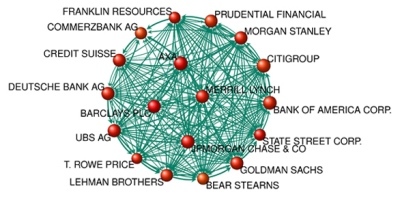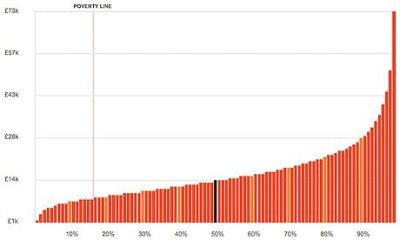Jeremie Averous's Blog, page 82
November 15, 2016
Would Manhood be Destroyed by the Collaborative Age?
There appears to be a number of publications about the loss of power by men in the new society, and the fact it may be a major causes of the current crisis.
 Traditional Industrial Age manhood
Traditional Industrial Age manhoodOne of the major pieces is a 2010 essay in The Atlantic ‘The End of Men‘ that describes how woman are taking power since the 1970s (since the wide adoption of birth control, noted by us as a key contributor to the Fourth Revolution) and how men have now lost their traditional identity of bread winner for the family. The piece even describes how active discrimination is needed to get enough men into university as women would be much more successful academically.
But these statements can sometimes go a bit over the top like in that Marginal Revolution post ‘What the hell is going on?‘ where the loss of manhood is suggested to the at the root of many contemporary political woes (“The contemporary world is not very well built for a large chunk of males“).
There is definitely a rebalancing act between men and women happening, and it is true that a lot of the blue collar jobs lost to the Fourth Revolution transformation were traditionally held by men, which creates some identity crisis. We should however probably not go to the opposite statement. After all, Silicon Valley is still struggling to get a fair share of women in startups.

November 12, 2016
What New Institutions Are Needed for The New World of Work
The new world of work – sometimes dismissively called ‘Uber-ized’ – will require new institutions. This post from Quartz ‘How to make an Uber-ized economy work in America‘ provides some interesting clues.
 Becoming a contractor is an increasing trend: “[Independent contractors] share of total employment is rising, from 9% to almost 16% between 2005 and 2015. And it’s not just low-skill, uber-drivers turning to contract work out of desperation—the increase in alternative work spans all education levels. Americans with a college degree are most likely to be contract workers, and this group saw the biggest gains. Contingent work has also become more common across a variety of industries and occupations.”
Becoming a contractor is an increasing trend: “[Independent contractors] share of total employment is rising, from 9% to almost 16% between 2005 and 2015. And it’s not just low-skill, uber-drivers turning to contract work out of desperation—the increase in alternative work spans all education levels. Americans with a college degree are most likely to be contract workers, and this group saw the biggest gains. Contingent work has also become more common across a variety of industries and occupations.”
One of the main issues with the fact that we will become increasingly contractors is to manage the risk of a sudden loss of revenue; and more generally, the ups and downs of income depending on how often we provide our services. This is a problem I am managing in my consulting company, voluntarily keeping a substantial share of earnings in the company to cope with periods with lower utilization. De facto, the company is being used as an income insurance buffer. It might not be the most efficient way, but it works.
The Quartz post proposes that the state could setup a ‘wage insurance’ against substantial drop of income to cover those extreme events that can really derail one’s life. This could be a very useful institution for the Collaborative Age, together with some sort of collective health and life insurance.
What other institutions could we think of for the Collaborative Age?

November 10, 2016
How to Overcome The Link Between Job and Identity
In the Industrial Age, job title was very much one’s social identity, in particular related to the position in pyramidal organization charts. In many countries like France, the studies (university, degree) and grade achievements was also very much one’s identity. It is still the case at various levels.
 However, this easy-to-relate identify definition will disappear in the Collaborative Age as the importance of conventional organizations will progressively disappear, and as we will be increasingly on our own without a fixed ‘job’, or at least only with temporary ones.
However, this easy-to-relate identify definition will disappear in the Collaborative Age as the importance of conventional organizations will progressively disappear, and as we will be increasingly on our own without a fixed ‘job’, or at least only with temporary ones.
This situation creates a lot of stress on personal identity. It is thus a high barrier for those that hesitate to jump out of traditional organizations; or, those who get retrenched or lose their job and have to reinvent themselves. It is possibly one of the biggest stressors in society today.
One needs to realize how defining oneself in terms of job title and university degree is limiting. In particular after a few years’ experience, our personal identity is much more complex and full; and it involves both personal and professional elements. We need definitely to find other ways of expressing our complete identity. It could be through our own creations or on social media.
Transforming the way we express our identity is a mandatory skill for the Collaborative Age.

November 8, 2016
Why It Is The End of Driving Services
It is soon the end of driver services such as taxi and limos, and those currently employed there should start looking for other occupations.
 The self-driving car is just at the corner, and when society will realize that they are indeed much safer than human-driven cars, there will certainly be suddenly a tipping point.
The self-driving car is just at the corner, and when society will realize that they are indeed much safer than human-driven cars, there will certainly be suddenly a tipping point.
Of course that will be felt like an unjust revolution by those employed in the driving trade, but let’s face it, that is clearly the direction of the world. Convenience, safety and efficiency will create the change. And this will impact also insurance companies, car manufacturing companies (because of the impact on car ownership) and a lot of related services (including the profitable industry of traffic speeding fines!).
I may even live to see human driving forbidden by insurance on public roads because of its dangerous nature.
It will be a disaster for those involved in the trade, and generally a great progress. They’s better anticipate it.

November 5, 2016
How To Create Emotional Connection in a Community
In this great blog post ‘What do people need to feel part of your community?‘, Pamela Slim shares how to create actual emotional connection within a group of people. And she certainly has great experience doing just this.
Feeling safe
Feeling seen
Feeling heard
Feeling honored
One aspect that struck me particularly is her statement “I want to stress that “safe” doesn’t have to imply “always comfortable.” Some of the very best community building involves real discomfort as people explore beliefs and perceptions, challenge assumptions and explore differences.” Actually, I do strongly believe that going together through uncomfortable situations is a great way to create emotional connection – and that’s a ploy commonly used for example, for team-building events.
How do you treat the community you are trying to build? Is there any of these elements missing?

November 3, 2016
How to Overcome The Problem of the Flawless Record
Our society seeks the Flawless Record. Our resumes have to be flawless and have no holes, and in general we are suspicious of people with any hint of controversy. However as Seth Godin reminds us, this is a paradox. Success only comes from creating things that are criticized.
 Being criticized means that we try to move things forward. It means we have tried something new, something disruptive. As Seth Godin reminds us “If your goal is to be universally liked and respected and understood, then, it must mean your goal is to not do something that matters.”
Being criticized means that we try to move things forward. It means we have tried something new, something disruptive. As Seth Godin reminds us “If your goal is to be universally liked and respected and understood, then, it must mean your goal is to not do something that matters.”
I would like to add that it is great to be criticized and controversial as long as there is no integrity issue related to the matter (although sometimes adversaries might appeal to put our integrity, so that it is sometimes difficult to discern).
Flawless is not an objective. Consistent and courageous is. We need to choose – and maybe not make it through the usual filtering criteria of the Industrial Age!

November 1, 2016
How We Need to Tame our Selfie Habit
The fantastic picture of candidate Hillary Clinton waving at her fans that all have their back to her because they are taking selfies is gone around the world. It is not about being there, being to meet and possibly even talk to the candidate that is important. What is important is to have a proof that “I was there” and post it on social networks!
 I have already written on How Narcissism Increases in Our Society, but that beats largely all expectations. Not one person seems to be facing the candidate! Actually facing the candidate will probably soon look suspicious.
I have already written on How Narcissism Increases in Our Society, but that beats largely all expectations. Not one person seems to be facing the candidate! Actually facing the candidate will probably soon look suspicious.
This picture really questions the kind of society we are moving in. Do we want to live the experience, or be seen to live the experience? Increasingly I find it important to define moments of no-record where I can concentrate on the experience rather than concentrate on how best to broadcast it.
The Era of the Selfie is here. Seeing how it spreads, this surely corresponds to a deep psychological need. Another capability we need to learnt to tame in the Collaborative Age.

October 29, 2016
How To Thrive In a World Where Power is Concentrated
While concentration of power is quite unavoidable in today’s complex world, we still can thrive in this world. Of course, those institutions that have the power and the wealth might not have the best intentions and we should not be too naive. But thanks to the newly available technology of the Fourth Revolution, there is an intrinsic counter-power to this situation.
 anybody can publish to the world, for free (or close to it),
anybody can publish to the world, for free (or close to it),we can coordinate, re-group and communicate globally, for free (or close to it),
it is possible to start a business for a lot less money than before, and have instantaneously a global footprint,
we can travel anywhere for much cheaper than anytime before (compared to the average earning power).
The sheer size of those actors has also an interesting drawback, that can be increasingly observed: they don’t know what to do with their money. Share buy-backs are more and more widespread, a sure sign that those organizations don’t know what to invest their resources in. This is great news because it has probably never been easier to get money to fund new initiatives and ventures. And these resources will necessarily flow into much smaller setups, that are nimble enough to take advantage of the opportunities of today’s world.
One can also argue that these huge organizations are also struggling with controlling themselves and what they are actually doing.
Hence although this might be a problem on some aspects, I do not find the concentration of power we can observe to be a major impediment of taking initiative and developing new stuff, on the contrary.

October 27, 2016
Why Power and Ownership Get Concentrated in Today’s World
Power and ownership get concentrated into a few hands. This is clearly shown in the TED talk of James B. Glattfelder: ‘Who controls the world?‘. In this 2012 talk, he shows by analyzing the ownership links between various global companies how a limited number of financial institutions control most of the economy.
 This is not surprising and is the natural consequence of the evolution of the complex, increasingly inter-related economic system. We should not be surprised and still it is an issue from the governance and political perspective.
This is not surprising and is the natural consequence of the evolution of the complex, increasingly inter-related economic system. We should not be surprised and still it is an issue from the governance and political perspective.
“It turns out that the 737 top shareholders have the potential to collectively control 80 percent of the Trans National Companies (TNCs)’ value. Now remember, we started out with 600,000 nodes, so these 737 top players make up a bit more than 0.1 percent. They’re mostly financial institutions in the U.S. and the U.K. And it gets even more extreme. There are 146 top players in the core, and they together have the potential to collectively control 40 percent of the TNCs’ value.”
This kind of studies produced the concept of “systemic” or “too big to fail” institutions. We may take regulatory measures to limit the phenomenon, but it is intrinsic to the increased complexity of the world. So my view is that we should rather learn how to deal with it.

October 25, 2016
How to Deal With the Concept of Average in a Complex World
In a complex system, wide distributions rule. The more complex, the wider the distribution and in particular the ‘long tail’ of the distribution. As our world becomes more and more complex, the concept of average disappears.
 We know for some time that extreme events shape our environment: storms, floods, earthquakes, tsunamis have instant transformation power, changing our environment more in a few minutes than changes brought slowly in decades. It is the same when it comes to financial crisis or bankruptcies of companies. A sudden, extreme event challenges the normal.
We know for some time that extreme events shape our environment: storms, floods, earthquakes, tsunamis have instant transformation power, changing our environment more in a few minutes than changes brought slowly in decades. It is the same when it comes to financial crisis or bankruptcies of companies. A sudden, extreme event challenges the normal.
Increased complexity also creates the increasing disparity in wealth and revenue, making the concept of average or median a much less useful concept. In fact as this entertaining article ‘On Average‘ shows, the concept of average might have been useful but has had adverse consequences before ergonomics was invented to allow to adapt our immediate environment to our personal particulars. The anecdote of the consequences of the concept on the death rate of military pilots is particularly enlightening.
Average is not useful concept. Let’s ditch it to favor more realistic concepts. Average was a concept of the Industrial Age. Today, large spreads and change through extremes is the norm.





